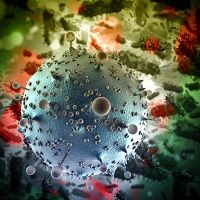Article
Mechanisms Underlying HIV Latency Vary in Blood, Gut
Author(s):
New research warns that the mechanisms behind HIV latency vary significantly in the blood and the gut.

The mechanisms that block HIV transcription and enable viral latency differ between tissue cells and blood cells, according to new research.
The study highlights the important role of the gut as a reservoir for HIV, and could serve as an important cue to drug developers that gut tissues need to be considered when designing therapies aimed at eliminating latent HIV.
Steven Yukl, MD, an associate professor at the University of California San Francisco School of Medicine, said latency is believed to be the main barrier between suppressing HIV, as is now possible with antiretroviral therapy, and definitively curing it.
“These latently-infected (CD4+) cells contain viral DNA that is integrated into the human chromosomal DNA, but they don't normally produce viral particles unless they encounter the right sort of conditions (such as those that normally activate T cells),” he said.
These latently infected cells lay low, avoiding setting off defense mechanisms in the cell or the immune system.
“The kind of memory T cells in which HIV causes latent infection can survive for decades, and they can also divide and pass on the infectious virus to multiple ‘daughter’ cells,” Yukl said. “Moreover, none of the approved antiviral drugs can disrupt latency or prevent reactivation from latently-infected cells.”
In order to better draw the battle lines against latent cells, Yukl and colleagues decided to study whether there were differences in the transcription blocks of virus in the blood versus virus in the gut by quantifying HIV transcripts in cells in the blood versus cells in the rectums of HIV-positive patients who were successfully taking ART.
Not only did they find differences in the mechanisms underlying latency in the 2 locations, they also found that tissue cells in the rectum appear to be particularly well suited for a deeper level of viral latency.
Yukl said it is believed that these latent cells are what allows the virus to rebound if a patient stops taking ART. He said some small fraction of latent virus is likely being reactivated to produce virus, which is what allows it to reverse latency. This process might cause other issues as well.
“[C]ontinual reactivation of these latently-infected cells—and the resultant viral products—may cause ongoing damage to the body and may contribute to the lower average life expectancy and higher incidence of different diseases that are observed even in patients who have been taking medicines for years and have maintained plasma virus levels that are below the detection limit of commercial tests,” he said.
Latency could also allow resistance to ART to carry on over time, essentially like “archiving” the resistance, Yukl explained.
Latently infected cells are the subject of considerable research, and Yukl said it’s important that researchers take into account the differences his team identified. He said there appears to be growing recognition of these differences, which is a good sign.
“However, researchers do not fully understand the mechanisms that lead to latent infection in the blood, let alone the tissues, and the tissues are harder to sample and study,” he said.
The study, “Gut and blood differ in constitutive blocks to HIV transcription, suggesting tissue-specific differences in the mechanisms that govern HIV latency,” was published in PLOS Pathogens.


